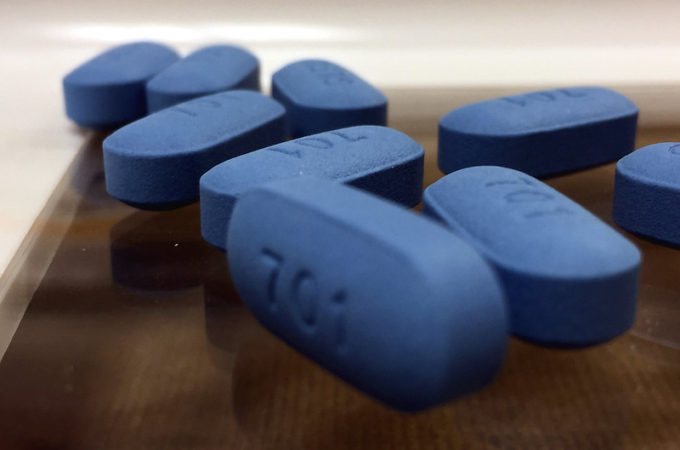United States v. Gilead Sciences, Inc., No. 1:19-cv-02103-UNA (D. Del. Nov. 6, 2019).
An unusual patent infringement case was filed earlier this month in the Federal District Court for the District of Delaware. The United States doesn’t regularly enforce its intellectual property rights against drug manufacturers, but as discussed in the Washington Post, it appears to be doing so here in an attempt to decrease the costs of HIV drugs manufactured by Gilead. Access to anti-HIV drugs is part of President Trump’s plan to eradicate AIDS by 2030, and the lawsuit seems to be aligned with that strategy. This case also touches on issues related to the issuance of new pharmaceutical patents that protect new uses of already existing drugs.
The lawsuit, filed by the Department of Human and Health Services (“HHS”) on behalf of the Center for Disease Control (“CDC”) seeks to enforce its patents for pre-exposure prevention (“PrEP”) HIV therapy against Gilead, a manufacturer of PrEP therapy drugs. Specifically, the government alleges that four patents issued to CDC inventors are being infringed by Gilead when prescribed for PrEP therapy. As discussed in Youle et al, earlier generations of HIV drugs had substantial side effects that prevented their use in a preventative manner. These early drugs were limited to the treatment of individuals already infected with HIV or as a preventative measure for individuals already exposed to HIV (post-exposure prevention, or “PEP”).
The CDC patents in this lawsuit cover the use of anti-HIV drugs with reduced side-effects that can be used in PrEP therapies. Specifically, the patents cover PrEP therapy using drugs that combine two anti-retroviral active compounds: emtricitabine and tenofovir. U.S. Patents Nos. 9,044,509, 9,579,333, 9,937,191, and 10,335,423, were issued to the CDC between 2015 and 2019 and all claim priority to a provisional patent application filed in February of 2006. The patents cover different modes for drug delivery and different forms of the tenofovir molecule.
There are two Gilead drugs allegedly infringing the CDC patents: Truvada and Descovy. Truvada’s initial FDA approval came before CDC patents’ 2006 priority date, in 2004, but its indication was only for the treatment of HIV-infected patients. Truvada’s FDA approval for PrEP indication took place in 2012. Descovy’s initial FDA approval for infection treatment came in 2016 and its FDA approval for PrEP therapy came recently, in October of this year. Both are combination drugs that include the same two active compounds listed in the patents: emtricitabine and tenofovir. The difference between both drugs is in the specific form of tenofovir employed.
The initial procedural move did not, however, start with the United States filing this case. In August, Gilead challenged the validity of the four patents by the United States Patent and Trademark Office (“USPTO”). Gilead v. U.S., Nos. IPR 2019-01453, 2019-01454, 2019-01455, 2019-01456 (P.T.A.B. petition). The procedure, called an inter partes review (“IPR”), is a trial proceeding within the USPTO that allows the re-examination and invalidation of patents for novelty (35 U.S.C. § 102) or obviousness issues (§ 103) at the request of a third party. IPRs are a tool for patent infringement defendants to challenge the validity of a patent before getting into the discovery stage of a trial, which can be extremely expensive. Gilead therefore preemptively struck by petitioning the IPR before this infringement lawsuit was filed. It appears that Gilead was already concerned with the government’s enforcement of the patents. That Gilead refused to license the CDC patents was the topic of a report by the Washington Post in March, and was raised in a hearing in the House Oversight Committee in May of this year.
This case also touches on the subject of the issuance of patents covering new uses of already existing indications. Patents are tools that provide incentives for discoveries; the incentives provided by this type of patent practice might be limited, as discussed by Robin Feldman. In this case, the CDC inventors did not develop the combination drug itself. Instead, their invention lies in the application of the drug in PrEP therapy. In fact, the complaint states that the CDC obtained the compounds from Gilead to perform this research. As discussed in paragraphs 119-27 of the complaint, the agreement took place through a materials transfer agreement that protected the CDC’s IP rights, and hence, this issue is unlikely to affect the litigation.
The litigation is still in very early stages, but Gilead appears to be unwilling to license the patents. As such, this case might establish the ways by which the U.S. can use IP generated in government-sponsored research as a tool to control drug prices. This case might establish how patents covering new indications for pre-existing drugs can be enforced against the parties that had the initial patent rights for it.
